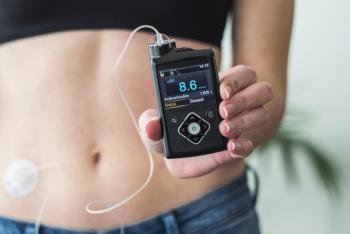
Radiologists take issue with new USP report on drug errors
To err is humanto report it may create controversy. That is the sentiment these days surrounding the sixth annual MEDMARX Data Report: A Chartbook of 2000-2004 Findings from Intensive Care Units and Radiological Services, which analyzed 40,403 records collected from hospitals and healthcare institutions across the country.
MEDMARXthe anonymous standardized program used by more than 850 healthcare facilities across the United States to report and track all adverse drug events, including medication dosing errors and adverse drug reactionsis the largest nongovernmental database of medication errors in the country. Since its inception in 1998, more than one million records have been stored in a central database at the United States Pharmacopeia (USP) for educational and research purposes.
MEDMARX uses the National Coordinating Council for Medication Error Reporting and Prevention (NCC MERP) Error Outcome Category Index, which categorizes medication errors according to nine levels of severity ranging from potential errors to harmful errors and death. The index also considers factors such as whether the error reached the patient and, if the patient was harmed, to what extent.
Participating hospitals not only can review their own data but also view errors experienced by similar institutions, for the purposes of learning both from past mistakes and approaches for correction. The focus of MEDMARX is on medication use processes, systems, and technologies as opposed to being a punitive approach that focuses on the error itself.
The latest MEDMARX report examines, in detail, medication errors associated with radiological services at 315 hospitals and health systems, including procedures performed by radiology departments, cardiac catheterization laboratories, and nuclear medicine.
Of the errors reported by radiology services, 12% (242 of 2,030 reported between 2000 and 2004) were categorized as harmful errorsmore than seven times the rate of harmful errors seen in the general MEDMARX data set. Frequently, for patients undergoing imaging procedures the continuity of care is broken: Patients circulate quickly through radiology departments, there may be a breakdown in communication between the patient's doctors and nurses and the radiology staff, or there may be miscommunication resulting in medication errors.
The four leading types of radiological errors included wrong dose (28%), wrong drug (17%), omission of drug (17%), and prescribing errors (12%). During a press conference to report the recent MEDMARX findings, John Santell, M.S., R.Ph., director of educational program initiatives for the USP Center for the Advancement of Patient Safety, described how easy it is for a wrong dosage to be administered if radiology staff temporarily disconnect intravenous tubing for two drugs during an imaging procedure and inadvertently reconnect the tubing to the wrong pumps after the procedure.
One patient was administered 60 times the prescribed dosage of narcotic when this scenario actually happened. Another example cited by Santell involved failure of the staff in a cardiac catheterization laboratory to decrease the dosage of an anticoagulant in a patient with renal failure. The patient subsequently died due to hemorrhaging complications.
Performance deficits, described by Santell as occurring by a "person who was properly trained and knowledgeable but for some reason failed" to follow proper procedures, reportedly was the leading cause of error that resulted in patient harm in the MEDMARX radiology data analysisoccurring more than 50% of the time. Common reasons for performance deficits included staffing shortages or other distractions. However, performance deficits often coincided with other problems, such as protocols not being followed (19.5%), miscommunication (16.2%), inadequate patient monitoring (11.9%), and drug contraindications or allergies (9.7%).
Santell termed anticlotting agents, sedatives, narcotics, and radiographic contrast dyes as "high-alert medications" for radiology. That means that a "heightened risk of significant patient harm" is likely when these medications are used in error, he said.
USP representative Diane D. Cousins, R.Ph., VP of the USP Center for the Advancement of Patient Safety, readily acknowledged that the MEDMARX report "is not a scientific study." It simply has evaluated data submitted voluntarily by participating hospitals and health systems. MEDMARX does not look at rates of errors; the number of imaging procedures performed in each hospital is unknown by USP.
In fact, Cousins indicated, "Medication error rates are of no value, since the intent is not to assign blame. We don't assign blame, or we'll never get the root cause." On the other hand, the intention of the report is to stimulate self-examination at institutions to identify weak links within each facility. USP believes that the findings signal a need for health systems and healthcare providers to take action to examine medication processes related to radiological services.
The MEDMARX report was not warmly received by the American College of Radiology (ACR), which has criticized the report as incomplete, inaccurate, and lacking careful and logical analysis. James P. Borgstede, M.D., FACR, chair of the ACR board of chancellors, said, "The massive flaws in the report's methodology and its failure to provide context as to the scope of errors reported seriously undermine the study's conclusion." According to ACR, there is concern that this study may unnecessarily alarm patients, causing those who require imaging care to mistakenly avoid getting it.
Despite the response of ACR, USP executive VP and CEO, Roger L. Williams, M.D., stands behind the MEDMARX report and encouraged healthcare professionals to use the data appropriately to analyze and prevent medication errors before, during, and after radiological procedures.
"After all," said Williams, "one patient harmed by a medication error is one too many."
THE AUTHOR is a clinical writer based in Pennsylvania.
Newsletter
Pharmacy practice is always changing. Stay ahead of the curve with the Drug Topics newsletter and get the latest drug information, industry trends, and patient care tips.




































































































































